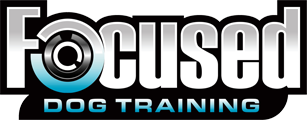Understanding the Importance of a Dog Behavior Consultation
A dog behavior consultation isn’t just a casual meeting; it’s a crucial step to help your dog live its best life. Think of it as a detailed chat where an expert digs deep into your dog’s habits, quirks, and issues. Whether it’s endless barking, a new fear of strangers, or a sudden aggression, these consultations provide insights and solutions. The goal? To understand your furry friend better and tackle any behavior problems head-on. By pinpointing the cause, a behaviorist can tailor a plan that fits your dog perfectly, leading to a happier, more balanced pet. It’s not about quick fixes but sustainable changes. And remember, every dog is unique, so the insights from this consulting can be a game-changer for your dog’s well-being and your peace of mind.
What to Look for When Choosing a Dog Behavior Consultant
Choosing the right dog behavior consultant is crucial. You want someone who knows their stuff and can connect with your dog. Here’s what to keep an eye out for. First, check their qualifications. Look for certifications from respected organizations like the International Association of Animal Behavior Consultants (IAABC) or the Certification Council for Professional Dog Trainers (CCPDT). Experience matters too. More years mean they’ve seen it all and can handle whatever your dog throws at them. Also, specialization is key. If your dog has specific issues like aggression or anxiety, find a consultant who focuses on those areas. Don’t forget to ask for references. Talking to past clients gives you the real scoop on how effective the consultant is. Finally, the vibe has to be right. You and your dog should feel comfortable and understood. Trust your gut here; if something feels off, keep looking. The right consultant can make all the difference, leading to a happier, well-behaved dog.
Preparing Your Dog for the Consultation
Before heading to your first dog behavior consultation, get your furry friend ready. This isn’t a Herculean task; just keep a few simple things in mind. First up, it’s good for your dog if they’re well-rested. A tired dog might be grumpy or overly passive. Next, ensure they’ve eaten. A hungry dog can be distracted or cranky. However, don’t feed them right before the visit as it might cause discomfort or, worse, an upset stomach during the session. Bring their favorite treats and toys. These items work wonders to keep them calm and can be used as part of the training during the consultation. Also, a familiar blanket or comfort item doesn’t hurt. If they’re used to a leash or harness, make sure it’s the one they’re most comfortable with. Lastly, jot down any questions or concerns you have beforehand. This means you won’t forget important points in the moment. Keeping it simple and stress-free for both you and your dog will set the stage for a successful consultation.
Essential Documents and Information to Bring
For your first dog behavior consultation, arriving prepared is key. Make sure to gather all the necessary documents and information beforehand. Here’s what you need to bring: First, your dog’s medical history. This includes vaccination records and any health problems your dog has faced or is currently facing. It’s crucial for the behavior consultant to understand your dog’s physical health. Second, bring any details about your dog’s diet, including the type and amount of food they eat. Food can impact behavior, so this info is valuable. Third, jot down a list of the behaviors you’re concerned about. Be specific about when these behaviors occur, how often, and under what circumstances. Fourth, if applicable, bring details of any previous training your dog has undergone, including the methods and outcomes. Lastly, think about your goals for the consultation. What do you hope to achieve? Being clear about your expectations helps the consultant tailor their advice to your needs. Walking into your consultation with these items in hand will set you up for a productive session.
Behavioral Issues to Highlight During the Consultation
When you step into your first dog behavior consultation, be ready to talk clearly about the issues you’re noticing. Your trainer wants to understand what’s happening, so they can help. Focus on specifics. Is your dog barking non-stop at the door? Does your pup show aggression towards other dogs or people? Maybe they’re chewing on everything but their toys, or perhaps they can’t seem to follow basic commands. It’s not just about listing problems. Explain when these behaviors happen, what seems to trigger them, and how your dog acts in different situations. This info points the trainer in the right direction. Remember, you’re the expert on your dog’s quirks. Sharing these details helps carve out a plan tailored just for them.
What to Expect During Your First Dog Behavior Consultation
Your first dog behavior consultation is all about understanding your furry friend better. Expect it to be a meet and greet session where the behaviorist gets to know your dog. They’ll watch how your dog acts and reacts. They’ll ask you questions about your dog’s history, habits, and any specific issues you’re facing. This talk isn’t just one way, though. You’ll get to ask all sorts of questions too. Think of it as a fact-finding mission where both you and the behaviorist lay everything on the table. The goal? To come up with a plan that suits your dog’s unique needs. Remember, every dog is different, so this consultation is crucial for tailoring the right approach. It’s not about quick fixes but understanding and working through behaviors for the long haul. So, keep an open mind and be ready to share and listen.
The Role of Communication in Dog Behavior Consultation
A key thing in a dog behavior consultation is how you talk and listen. It’s not just about telling the expert what your dog does. It’s also about hearing what they say back to you. Think of it as a two-way street. The better you are at explaining your dog’s actions and your concerns, the better the advice you’ll get. But it’s not all about talking. Listening is just as crucial. The expert will share insights and suggestions based on their experience. Paying attention and asking questions when you’re unsure can make a big difference. Remember, clear communication means a better understanding for both you and the professional. This approach helps tailor the advice to fit your dog’s unique needs.
The Follow-Up: After the Consultation
After your dog’s behavior consultation, the journey to improvement begins. Your trainer will likely give you homework—specific tasks or exercises to work on with your dog. It’s crucial to stick to these assignments. Consistency is key. You’re not alone, though. Expect follow-up calls or emails from the trainer to check in on your progress. These check-ins are a great time to ask questions, report successes, and express concerns. Depending on your dog’s needs, a follow-up visit might be necessary to adjust the behavior plan. Remember, training is a process. Progress might be slow, but with dedication, you’ll see improvement. Stay patient and keep communication open with your trainer. This partnership is vital for your dog’s success.
Implementing the Consultant’s Recommendations at Home
After your consultation, you’re likely to come home with a list of recommendations. It’s crucial to follow these closely. First, start immediately; waiting only makes it harder for your dog to adapt. Consistency is key. If the consultant suggests a new feeding routine or specific training exercises, sticking to them daily helps your dog learn what’s expected. Don’t confuse them with mixed messages; if the whole family is involved, make sure everyone’s on the same page. Remember, changing behavior takes time. You might not see immediate results, but with patience and consistency, you’ll notice improvements. If something isn’t working, get back in touch with the consultant. They’re there to help you adjust the plan if needed. Keep track of your progress. Note any changes in behavior, no matter how small. This documentation can be incredibly helpful for future consultations. Remember, your effort is key to your dog’s progress.
Summary and Key Takeaways
Before heading into your first dog behavior consultation, arm yourself with the basics to make the most out of it. First, understand it’s a team effort between you, your dog, and the behaviorist. Your readiness to learn and adapt is just as critical as your dog’s. Here’s what to take away: Know the behavior you want to address. Is it aggression, anxiety, or something else? Have a clear goal. Collect any records or incidents related to the behavior. This helps the behaviorist get a complete picture. Be open about your daily routine, as small changes can have big impacts on your dog’s behavior. Lastly, commit to the process. Improvements take time and consistency. Remember, it’s about creating a happier, more harmonious relationship with your furry friend.


